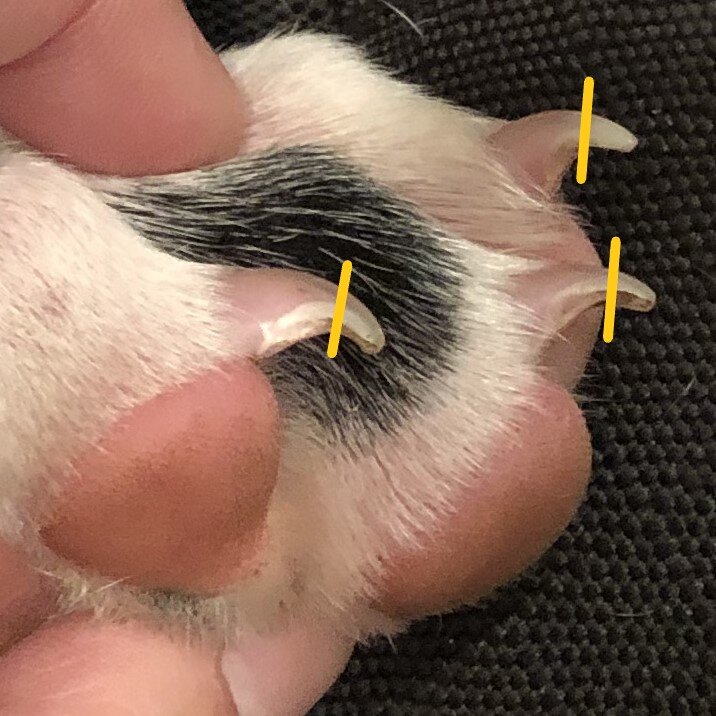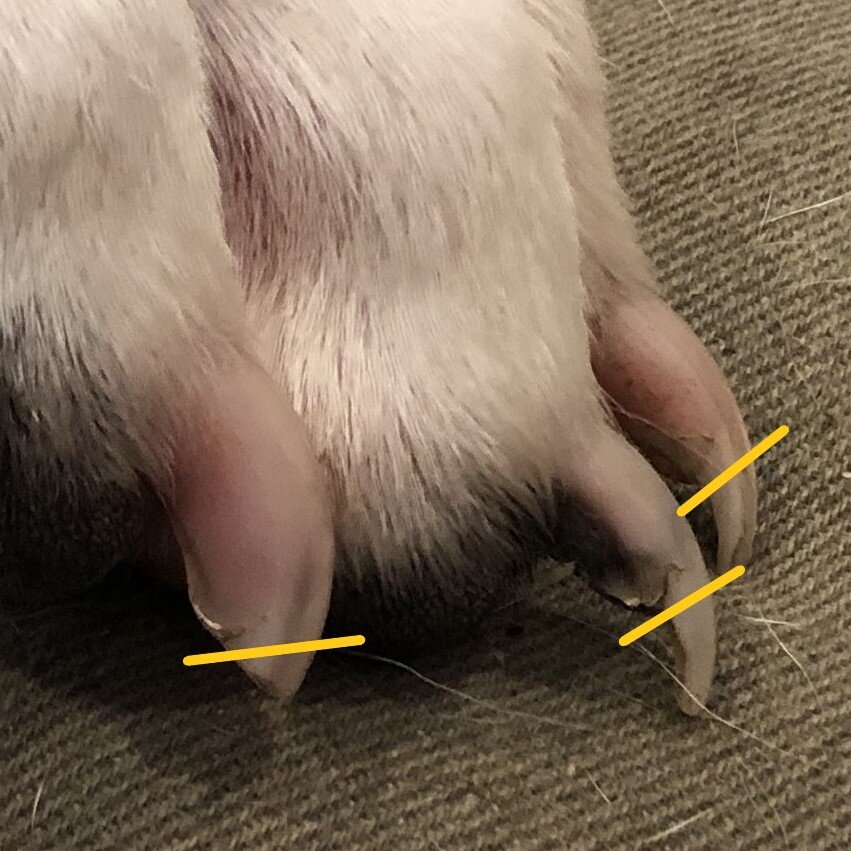Many of my clients have pools and would like to teach their dogs to swim, for both safety and exercise. Not all dogs are natural swimmers, though, and some are downright terrified of being submerged. Let’s break this down into smaller steps, to help our dogs gain confidence and make positive associations with first playing, and then swimming, in water.
Start with a baby pool, like the classic blue plastic ones, or an appropriately-sized dog pool.
Make sure your dog is comfortable getting in and out of it while it’s dry - for tiny dogs, you can create steps or ramps (see photo), or cut the side down for them (credit to Emily Larlham/KikoPup for the idea, shown here).
Your dog may need a non-slip surface placed into the pool to feel more confident. You can use nonslip bathtub mats, rubber drainage mats, or a small rug.
Do training sessions in which you encourage your dog to get in and out of the pool, using toys and treats to make it fun. Over time, slowly increase the amount of water in the pool.
Make sure to play on hotter days, so the water feels cool and comfortable for your dog.
Here’s a brilliant game that one of my clients came up with: setting bowls with treats on the surface of the water. They’ll gently float around as your dog gets into and moves through the water, challenging him to wade around more.
Another game that may help is playing “keep away” with a stream of water from a hose (credit to Emily Larlham/KikoPup for the idea, shown here).
When you are transitioning from the baby pool to your full-sized one, make sure that your pool steps are appropriately sized. For smaller dogs, you may need to create more steps by submerging bricks or pavers. Alternatively, you can purchase or create a pool ramp. The shallower the entry point, the easier it will be for your dog to feel comfortable venturing farther in.
If you can locate a dog-friendly beach, stream, or lake with a shallow entry point, that will also give your dog a valuable opportunity to play and practice being in water.
Get into the water with your dog and encourage him to join you. Use his favorite toys and treats along with lots of happy talk.
Always let the dog choose whether he wants to get in, and when he wants to leave. Never toss a dog in or prevent him from exiting the water.
As he gains confidence, just encourage him to go farther and farther in, and incorporate as much play as your dog wants.
Consider getting a life jacket, especially for stocky/heavy breeds, dogs with short legs, and those with short muzzles (brachycephalic). Dogs who can’t seem to balance properly, and end up flailing with their front legs while their back legs sink, also benefit from life vests.
If your dog is social, meet up with others who have water-loving dogs, to model the behavior you want.
A few other safety considerations:
Consider fencing your pool until your dog is able to swim well enough that he can exit the pool from every spot. (Consider keeping that fencing up even after, just in case, especially if you have children.)
Always have fresh water available near the pool, so that your dog has the option to drink that instead of chemical-laden pool water (or bacteria-laden stream/lake water).
Beware of water intoxication, when a dog has ingested dangerous levels of water. (This is more likely to happen when a dog is grabbing toys in water or catching water from a hose than from calm swimming with their mouth closed.)
Beware of toxic blue-green algae (cyanobacteria) in natural bodies of water.
Watch out for sunburn, especially for dogs with short, sparse fur and light-colored skin pigment.


















